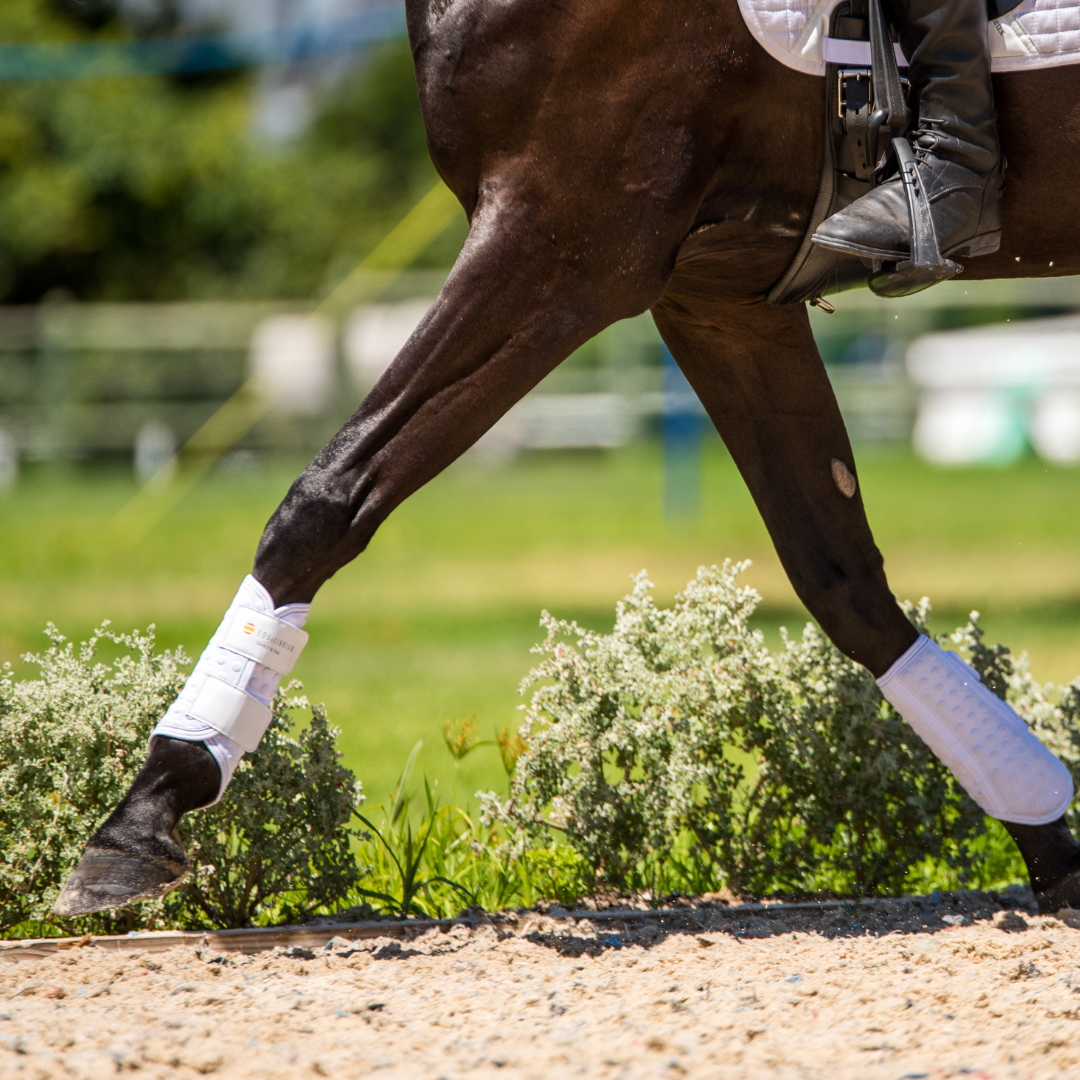Why use horse boots, wraps and chaps?
With so many boots available, finding the right boots for your horse can be confusing.
As riders and horse owners, we ask our horses to live and work in ways that they would not in the wild. This may be working harder, in different ways, with more repetition, on surfaces, carrying a weight and wearing horse shoes.
As a result we need to provide them with leg protection against injury from external impact, self-inflicted harm, and stress-related problems.
Why wear horse boots?
The current fashion trend for ‘matchy-matchy’ should not be the reason to ‘dress’ your horse in boots.
First and foremost, horse boots, wraps, chaps and bandages are worn to protect the horse’s legs from injury. Leg injuries can be caused by brushing, knocks, grazes, over reaching, penetration and concussion.
But the use of horse boots and bandages can itself cause problems associated with:
- Heat and moisture retention
- Restriction of movement or blood supply
- Excessive weight on the leg
It’s important to weigh up all these factors when deciding what boots to choose for your horse.
Does your horse actually need to wear boots at all?
Consider the level of work you are doing and the complexity of the work. Dressage horses may not need the same protection as a show jumper or event horse.
Minimise Risk – Consider the Negatives of Wearing Horse Boots
To minimise risk, boots should be chosen not only for the protection and support they provide, but also for the extent to which they keep the leg cool. This can be achieved by the use of modern breathable fabrics, combined with careful design and construction of the boot. The boot should allow air to flow from the leg though the boot to prevent heat build up. Overheating horses’ legs can cause long term tissue damage.
Choose boots that are made of breathable fabrics. There are a lot of modern technical fabrics that actually actively allow the legs to remain cool as they exercise.
Adding small amounts of weight to the end of the leg in the form of a boot increases the effort the horse must put in to move. A heavy boot or one which retains water or moisture can lead to injuries caused by tiredness.
Wherever possible choose a lightweight boot that’s comfortable for the horse to wear. Check that the boots are made from materials that won’t absorb and hold water when going through puddles, long grass or cross country.
If boots are constructed of inflexible (i.e. stiff) material or if boots are applied too tightly, they have the potential to restrict joint movement.
Look for boots made with flexible fabrics that move with the horse’s natural movements. Boots, wraps or bandages should be flexible and not applied too tightly.
So now we know what features and design elements to look for when choosing horse boots, let’s look at what boots to wear when!





